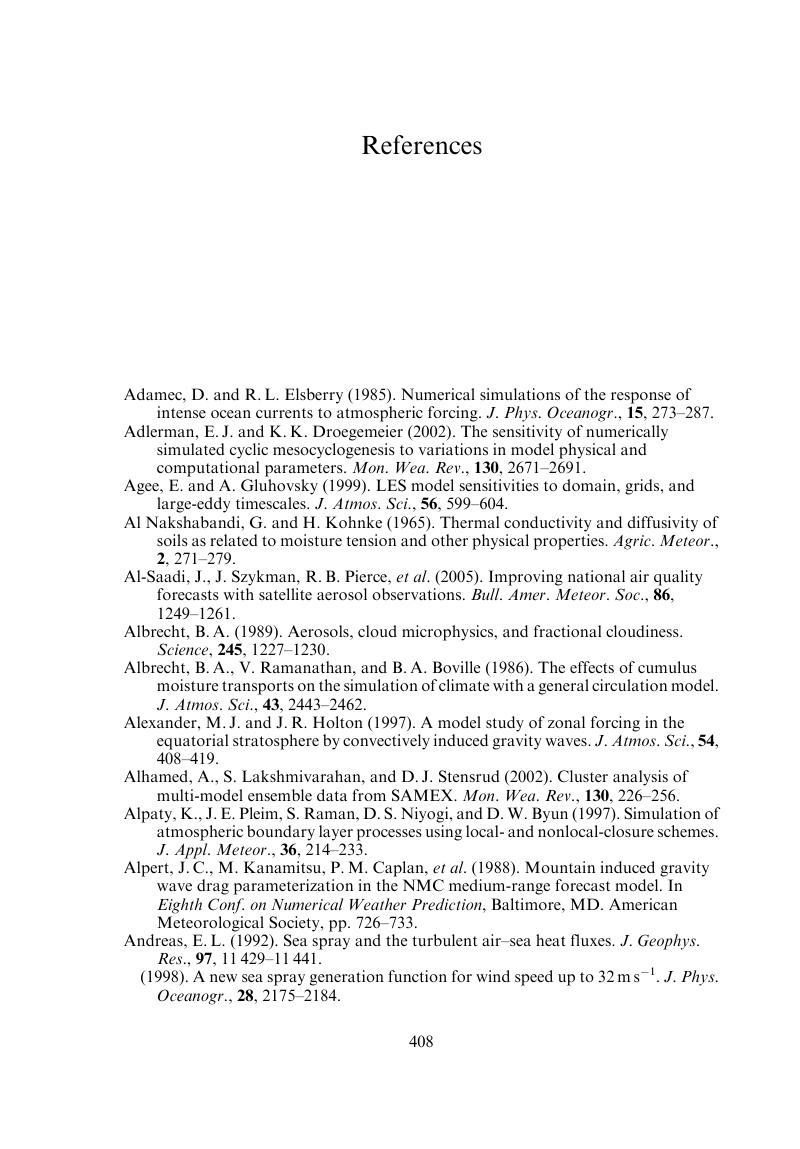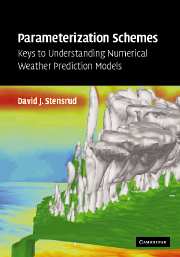Book contents
- Frontmatter
- Contents
- Preface
- List of principal symbols and abbreviations
- 1 Why study parameterization schemes?
- 2 Land surface–atmosphere parameterizations
- 3 Soil–vegetation–atmosphere parameterizations
- 4 Water–atmosphere parameterizations
- 5 Planetary boundary layer and turbulence parameterizations
- 6 Convective parameterizations
- 7 Microphysics parameterizations
- 8 Radiation parameterizations
- 9 Cloud cover and cloudy-sky radiation parameterizations
- 10 Orographic drag parameterizations
- 11 Thoughts on the future
- References
- Index
- References
References
Published online by Cambridge University Press: 05 September 2013
- Frontmatter
- Contents
- Preface
- List of principal symbols and abbreviations
- 1 Why study parameterization schemes?
- 2 Land surface–atmosphere parameterizations
- 3 Soil–vegetation–atmosphere parameterizations
- 4 Water–atmosphere parameterizations
- 5 Planetary boundary layer and turbulence parameterizations
- 6 Convective parameterizations
- 7 Microphysics parameterizations
- 8 Radiation parameterizations
- 9 Cloud cover and cloudy-sky radiation parameterizations
- 10 Orographic drag parameterizations
- 11 Thoughts on the future
- References
- Index
- References
Summary

- Type
- Chapter
- Information
- Parameterization SchemesKeys to Understanding Numerical Weather Prediction Models, pp. 408 - 448Publisher: Cambridge University PressPrint publication year: 2007



